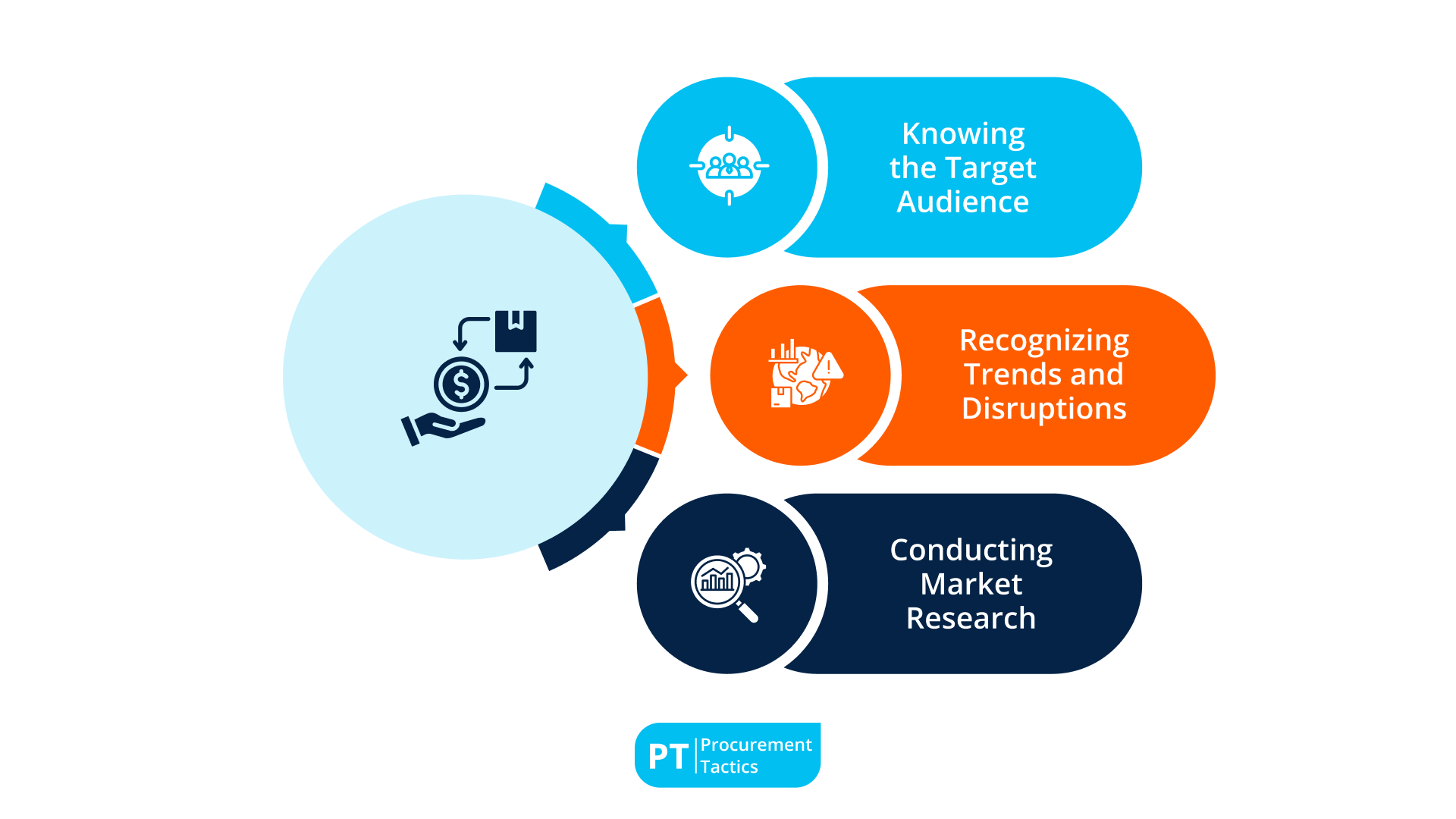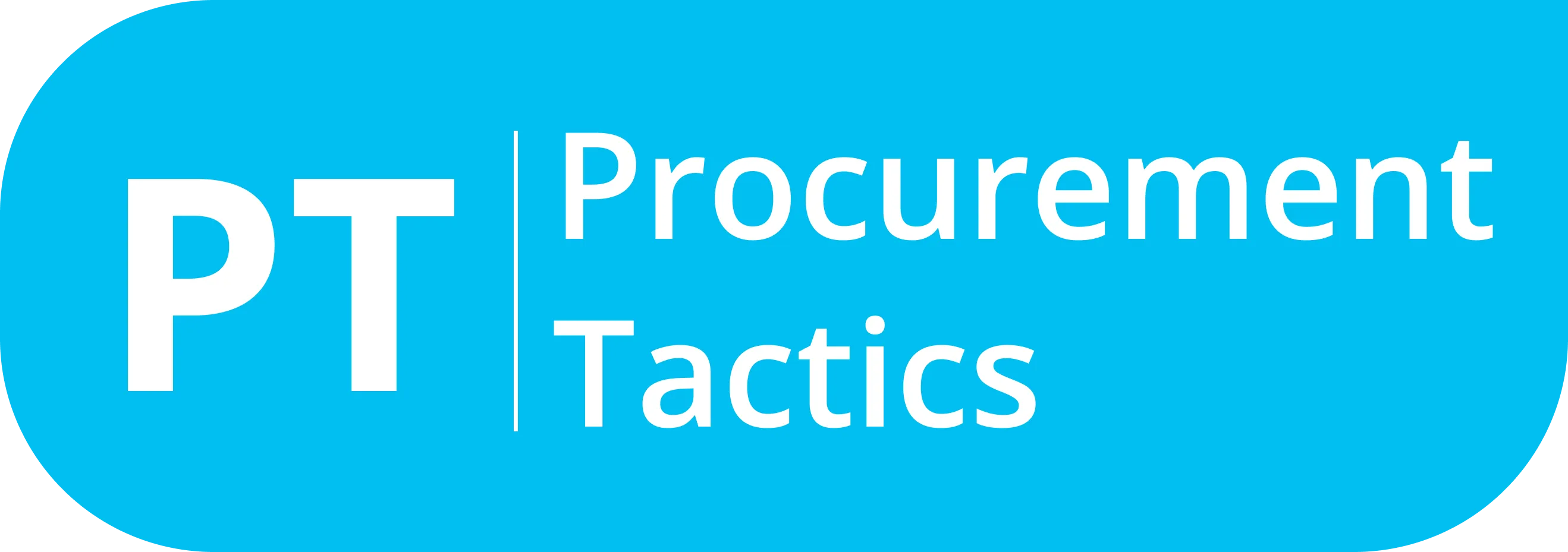Written by Marijn Overvest | Reviewed by Sjoerd Goedhart | Fact Checked by Ruud Emonds | Our editorial policy
Identifying Innovation Opportunities in Procurement For 2025
How do we identify innovation opportunities in procurement?
- Innovation in procurement begins with a keen awareness of the business landscape and the evolving needs of stakeholders.
- It’s not just about reducing costs but about finding new ways to create long-term value.
- By staying informed about market trends, procurement professionals can anticipate change rather than react to it.
How to Procure Innovation in Procurement?
Before we explore how to identify innovation opportunities in procurement, let’s first discuss how to procure innovation within the procurement process. Understanding how to procure innovation is important, as it allows you to assess what is possible and practical when looking for innovative opportunities. Now, let’s examine the two main ways to procure innovation:
1. Closed innovation
Closed innovation is a method in which companies create, build, and market their own ideas, holding the whole innovation process within the firm. Rather than acquiring outside solutions, firms invest in research and development (R&D), consulting firms, or university partnerships to develop proprietary innovations.
This method enables firms to have complete control over their ideas, guaranteeing a competitive edge by possessing the whole process, from idea to end product.
2. Open Innovation
Open innovation refers to the practice of sourcing and adopting external ideas, technologies, or solutions instead of relying solely on internal research and development. This approach helps companies to enhance their innovation efforts by implementing market-ready solutions rather than generating them within the organization.
Adidas and Allbirds is one example of open innovation. Although they are rivals, they joined to create the “Futurecraft.Footprint” shoe with the lowest carbon footprint ever. From a large-scale production perspective, Adidas shared its experience in materials while Allbirds shared its understanding of sustainable materials. This partnership shows how open innovation can help companies succeed at the most challenging tasks faster.
Many companies, such as IBM and Procter & Gamble, initially followed a closed innovation approach, relying solely on their internal R&D. However, these companies later shifted to actively seek external solutions as they recognized the huge benefits of an open innovation approach.
Finding the Right External Knowledge
If your company adopts open innovation, you need a strategy to search for external knowledge. There are two main approaches:
1. Broad Search
Engaging with many diverse external sources to gather a wide range of ideas. This provides access to new procurement trends, market shifts, and technologies but can be overwhelming.
2. Deep Search
Focusing on a few trusted partners for more in-depth collaboration. This builds stronger relationships, enhances trust, and improves knowledge sharing.
You may wonder, “Which of these two is better?” The decision between depth search and broad search depends on the goals of your organization. A broad search offers varied insights but can be daunting, whereas a deep search forges stronger collaborations and improves long-term collaboration. Finding the optimal balance between the two can enable organizations to achieve maximum benefits from open innovation.
How to Identify Opportunities in Procurement?

1. Knowing the Target Audience
Innovation starts with attitude—your openness to change and experimentation. But the process of innovation itself begins with your customers. They guide you, leading you toward solutions that solve real problems and build lasting value. True innovation is about value delivery, and that value is established by the needs, desires, and pain points of your end users.
In procurement, identifying the target audience is more complex than in other departments because it includes both internal and external stakeholders. Externally, the value chain relies on suppliers and service providers.
Quality supplier relations, good communication, and good processes guarantee fruitful cooperation. Internally, production, finance, and operations departments rely on procurement to provide the appropriate resources at the right price and at the right time.
By knowing the various needs of each group, you can develop new solutions that address their particular challenges—such as cutting delivery times, communicating more effectively, or streamlining approvals. These initiatives not only improve the process of buying things; they also make the whole business more efficient.
I witnessed this in my own work. I once helped a manufacturer in improving their procurement strategy, which had a spillover effect across the company. We started with customer demand, which in turn spurred our innovation.
Another company I worked with was a cheese company that initially was reluctant to introduce vegan lines, as their business was in traditional cheese. But seeing the increasing demand for vegan products in Western Europe, we assisted them in rethinking the role of procurement in product development.
By engaging procurement right from the beginning, we identified and brought on board new plant-based ingredient suppliers, streamlined sourcing operations, and facilitated timely delivery to achieve production schedules.
This not only allowed them to enter a new market but also enhanced interdepartmental collaboration, since procurement collaborated closely with R&D and production to implement proper integration of new ingredients. This created a more competitive product range and greater alignment between procurement and customer demand.
2. Recognizing Trends and Disruptions
Being in control of trends and the overall market is necessary in procurement today. Technology is shifting the dynamic of business with automation, AI, and data analysis. These changes enable procurement to be smarter by making data-driven decisions.
Another consideration when looking for innovative opportunities is sustainability. Innovation opportunities also exist in sustainable sourcing, circular business models, and waste reduction efforts due to consumers increasingly demanding environmentally friendly practices.
The need for resilience is equally brought to light due to the global supply chain disruptions. Understanding risk management in a widened scope as well as supplier diversification has both been highly beneficial for stability in non-stable environments.
Realizing these changes results in procurement leaders adopting an aggressive strategy and solving complex problems even before they arise, resulting in making procurement a valuable strategic tool for long-term value capture.
People sometimes think that spotting trends is a bit vague, but that’s not the case. Trends reveal themselves. To better understand what lies ahead, it’s essential to conduct trend research. Trends signal change and highlight emerging consumer needs. Once you see this, you can translate these insights into concrete opportunities for your company or strategy.
3. Conducting Market Research
Market research is important to understand the external environment and identify opportunities for innovating procurement. By analyzing market trends, you can develop strategies that are effective for the current condition of the market while anticipating future demands.
A strong market research process begins with knowing the key industry drivers. Identifying these shifts can help you stay ahead of the changing market needs and adjust your sourcing strategies accordingly.
Gaining insights from your competitors is another crucial strategy for understanding the market. By analyzing how they adopt new technologies, implement sustainability initiatives, or build supplier relationships, you can establish valuable benchmarks or metrics.
This allows you to identify how your processes differ from theirs and adopt only the best practices that align with current market trends.
For example, if competitors are advancing their sustainable sourcing practices to meet their customer demands, then you may need to enhance your sustainability efforts as well to remain competitive.
Although procurement doesn’t usually lead market and consumer research, gaining access to these findings is important. It will allow the sourcing strategy to be driven by market need, allowing the right materials, ingredients, or partners to be sourced to facilitate innovation.
With these findings, procurement can contribute significantly to product development, minimize inefficiencies, and drive company alignment. It turns market trends into fresh opportunities for growth and makes procurement a strategic success driver.
Examples of How to Identify Innovation Opportunities in Procurement
1. Target Audience Alignment:
Example:
A major retailer found that its procurement processes were causing delays in getting products to shelves, affecting both internal teams and end customers. By gathering feedback from store managers and suppliers, the procurement team realized the need for faster, more flexible sourcing. This insight led to the adoption of a digital procurement platform, reducing lead times by 30% and enhancing collaboration with suppliers.
Takeaway:
Understanding the needs of both internal and external stakeholders can uncover critical opportunities for process improvements and customer satisfaction.
2. When it Comes to Recognizing Trends
Example:
A technology company noticed the trend of increasing automation in procurement and decided to invest in AI-based supplier relationship management (SRM) software. This helped them to automate routine tasks, improve supplier data accuracy, and focus more on strategic supplier partnerships, which resulted in cost savings and stronger supplier relationships.
Takeaway:
Industry trends such as digital transformation can be used to recognize valuable opportunities for innovation.
3. Market Research For Sustainability Goals
Example:
A manufacturing company conducted a market study with a focus on sustainability and found that several competitors were advancing their environmental initiatives, which strongly appealed to consumers and regulators.
Through a comparison of their own supply base’s practices with prevailing market trends, they found a gap: several of their suppliers were not meeting their emerging sustainability standards.
In response, the company launched a program to support these suppliers in adopting eco-friendly practices. This initiative not only improved their supply chain’s environmental impact but also positioned the company as a leader in sustainability, aligning them with industry trends and regulatory expectations.
Takeaway:
Conducting a market analysis helps to identify areas where innovation is necessary to meet strategic goals, such as sustainability or compliance. By understanding the market landscape, companies can proactively address gaps, enhance their competitive positioning, and respond effectively to evolving consumer and regulatory demands.
Questions to Reflect To Identify Innovation Opportunities
1. Understanding Your Audience’s Needs
- Who are the people involved in your procurement process, both inside and outside your company? (For example, finance and operations teams, suppliers, and customers.)
- What problems do they face with your current procurement process? Are there common issues or requests that suggest a need for change?
2. When it Comes to Recognizing Trends
- What major trends are shaping your industry today? (For example, digital transformation, sustainability, or supply chain resilience.) How could these trends affect your procurement process?
- Which of these trends match your company’s goals, and how can you use them to stay ahead of competitors?
3. Conducting Market Research
- How are your competitors responding to market trends, and what can you learn from them for your procurement strategy?
- What parts of their procurement strategy give them an advantage, and how could adopting similar or better approaches help your company?
Conclusion
Innovation in procurement requires openness to change as this mindset will help you continuously seek ways to improve. Whether through closed or open innovation, aligning procurement with business needs and market shifts creates long-term value.
Furthermore, customer trends hold the power to shape industries, yet many struggle to translate them into actionable insights. Understanding why trends matter and how to apply them can set you apart, driving innovation and keeping you ahead of market shifts.
In our Innovation in Procurement Course, we break down a structured approach to trend analysis, providing a step-by-step framework to help you identify, evaluate, and implement trends effectively. By mastering this process, you’ll gain a strategic advantage in turning market movements into real opportunities for growth.
Frequentlyasked questions
How can you identify innovation opportunities in procurement?
Innovation in procurement starts with a clear understanding of the business environment and the changing needs of stakeholders. It is not only about cutting costs but also about finding new ways to create long-term value. By staying updated on market trends, procurement professionals can prepare for changes instead of just reacting to them.
What’s the difference between closed and open innovation in procurement?
Closed innovation keeps everything within the company, relying only on internal teams to find new ways to improve procurement. On the other hand, open innovation brings in ideas from outside sources like suppliers, research groups, and even competitors.
How do market trends shape procurement strategies?
Market trends show where industries are headed, and procurement teams that pay attention can stay ahead. Those who ignore changes are forced to react later, often at a disadvantage.
About the author
My name is Marijn Overvest, I’m the founder of Procurement Tactics. I have a deep passion for procurement, and I’ve upskilled over 200 procurement teams from all over the world. When I’m not working, I love running and cycling.





